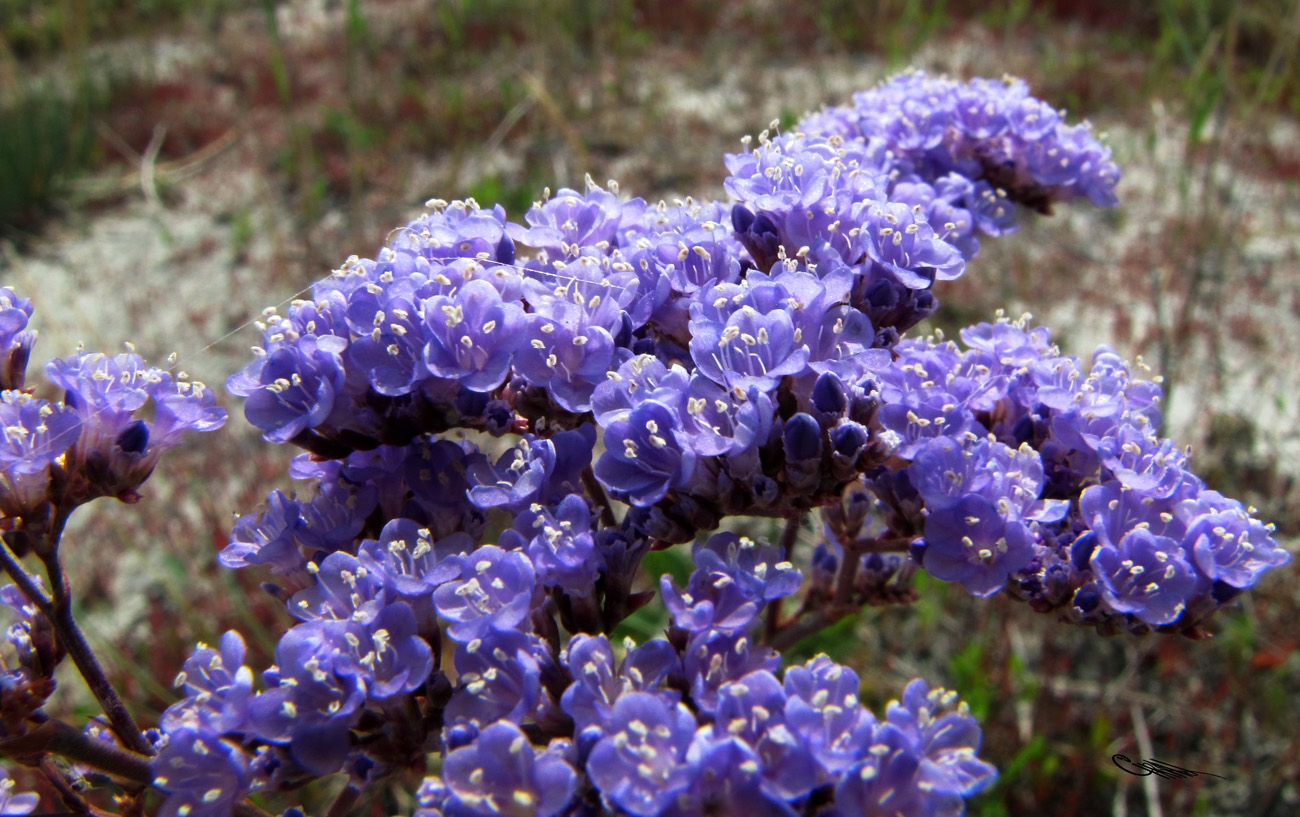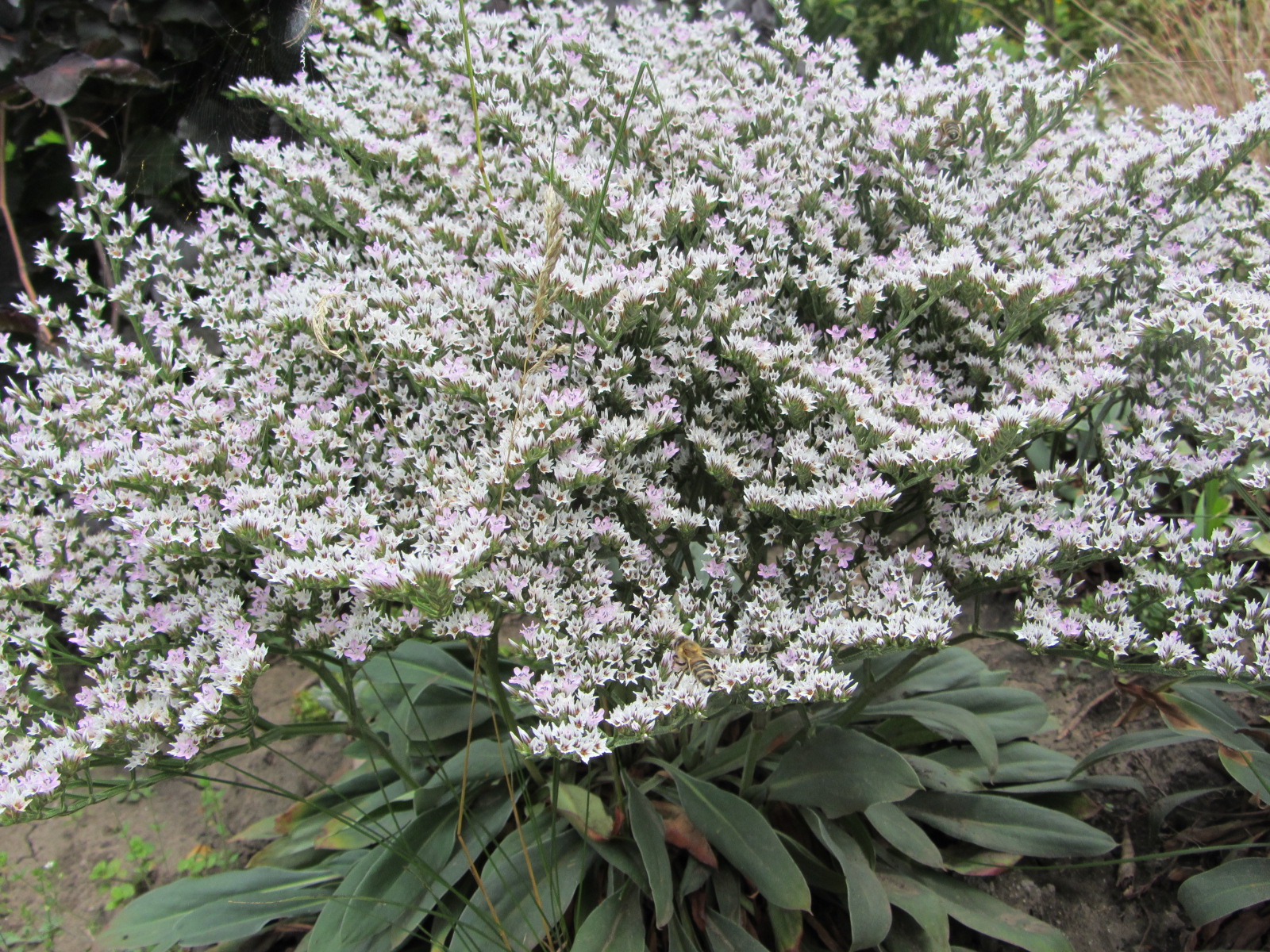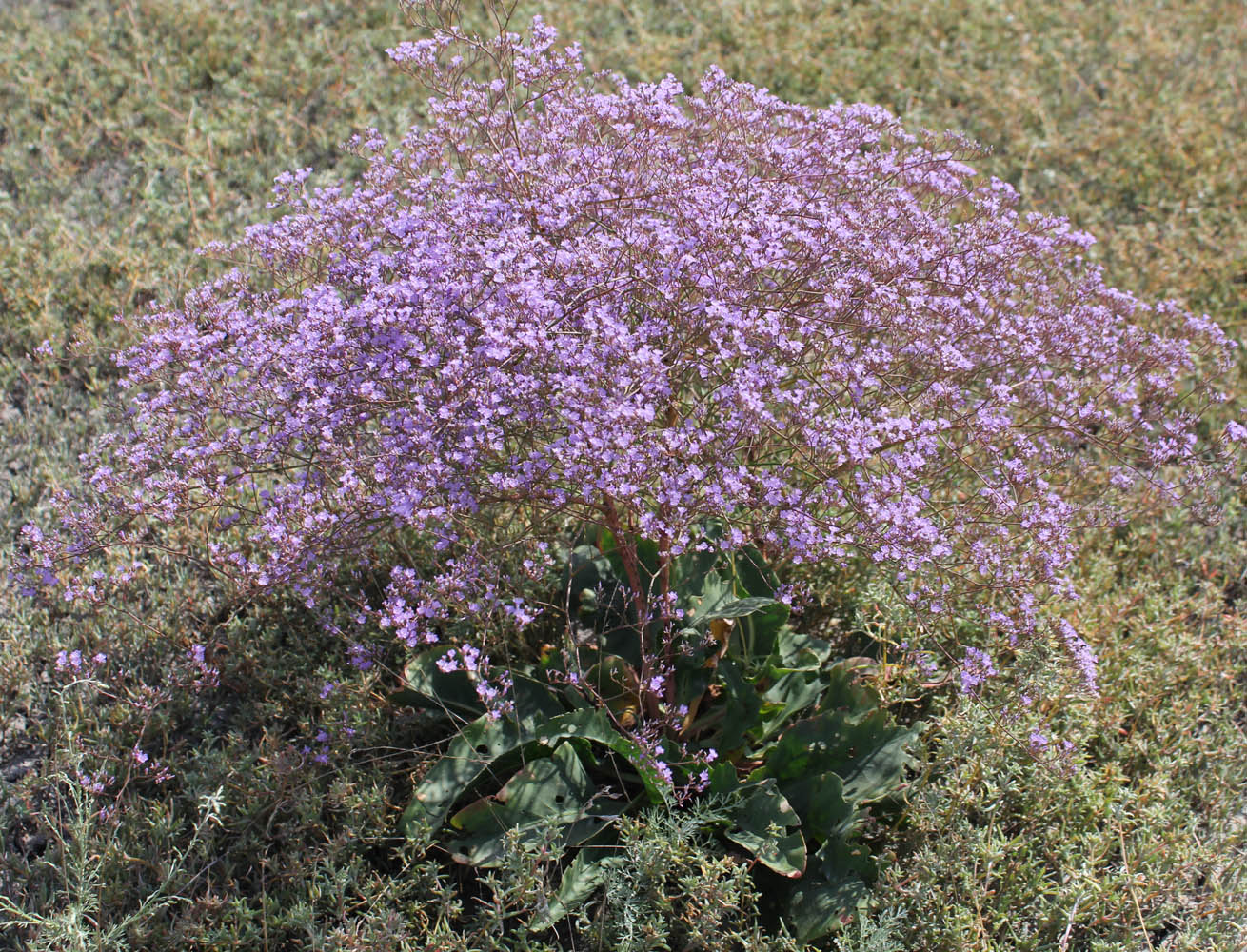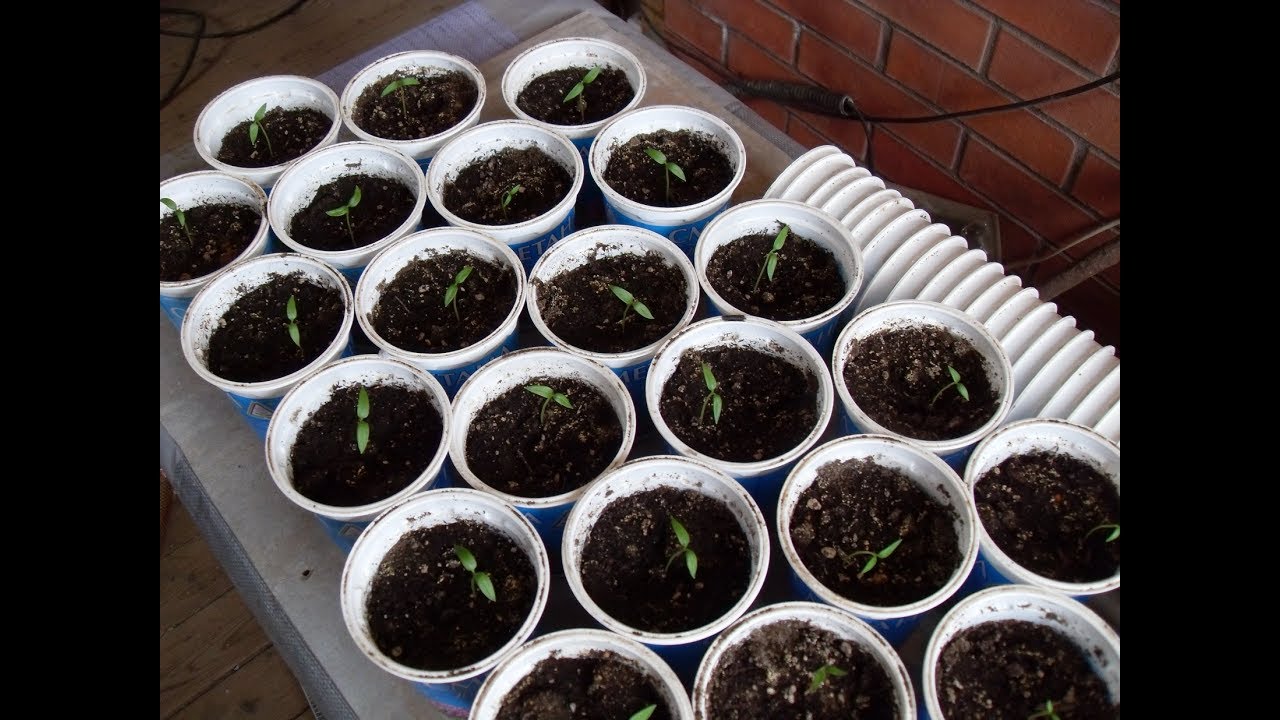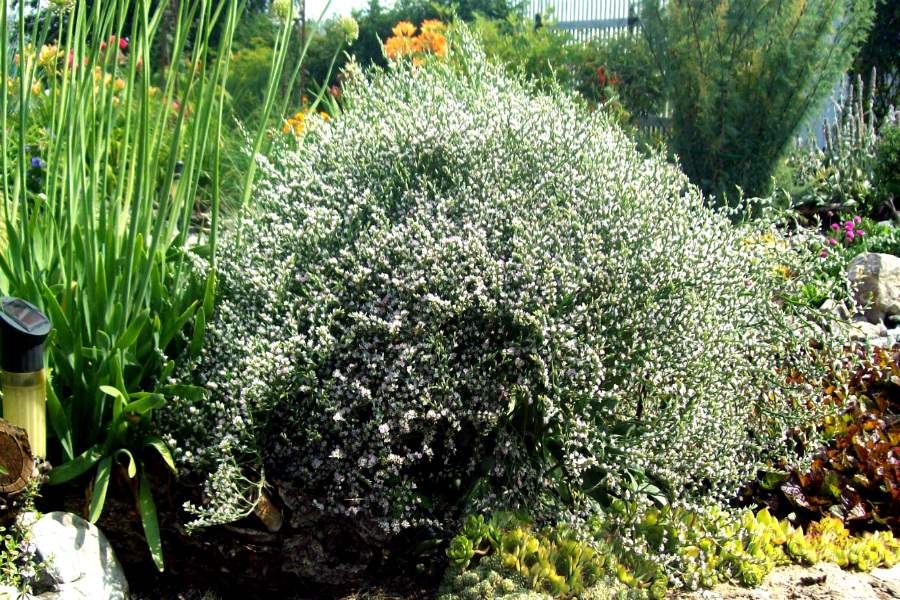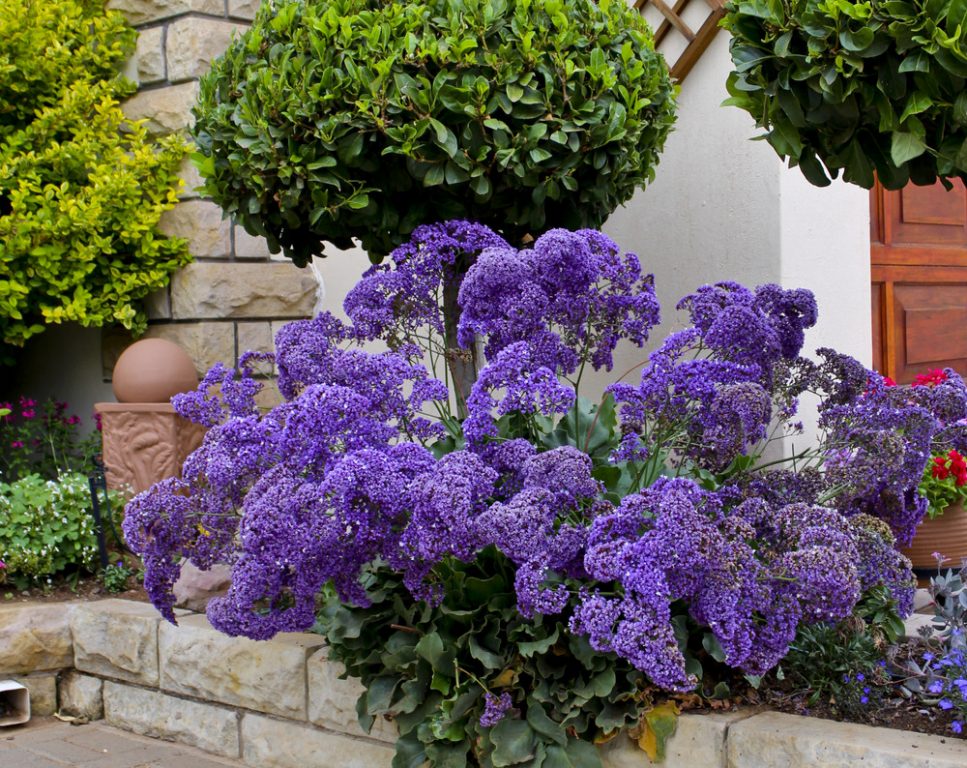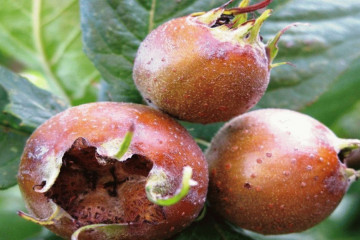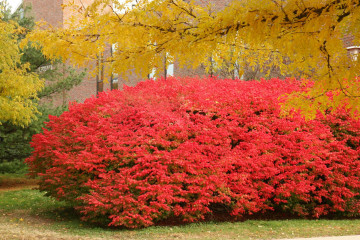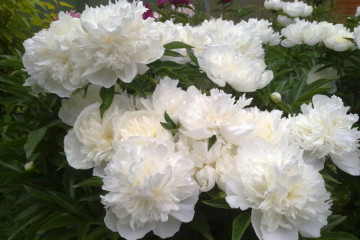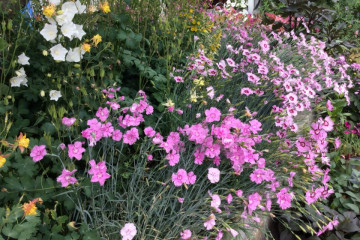Kermek Tatarsky (Statitsa) - growing a flower in the garden
Content:
The small shrub Kermek is distinguished by its ability to survive in the most inappropriate conditions and by its extraordinary appearance. The cap of its inflorescences of different shades looks like a cloud hovering over green foliage. Recently, kermek has gained popularity among flower growers and is widely used to create landscape compositions. Different peoples call the plant in their own way. For some it is statice, for others it is limonium (from the Greek "lawn"), some call it marsh rosemary or sea lavender. One of the most popular plant species is Tatarsky Kermek.
Plant features
The birthplace of Kermek is the countries of Africa and Asia. This species of the Pig family includes about 300 varieties. Most of them grow in the European and Asian Mediterranean regions. Arid, marginal lands for them are a natural habitat. Due to the powerful, elongated (up to 1 m) taproot, the plant has adapted to extract moisture.
Almost all varieties of Kermek are perennial or biennial plants, herbaceous shrubs with lignified shoots. They have enlarged leaves located closer to the root zone. The flowers of the plant are usually small, collected in paniculate ears.
Kermek Tatarsky - description
The perennial Kermek Tatarsky differs from other representatives of the species in its small height (no higher than 50 cm). Its leaves are leathery, slightly elongated, collected in a spreading bunch in the root area, from where strongly branching pubescent peduncles protrude.
The inflorescences are spike-shaped, crowned with an umbrella of tiny white flowers, with a barely noticeable corolla of a light red hue. The flower itself is five-petal, shaped like a bell.
By the time the seeds ripen, the peduncles dry out, bend to the ground, giving the plant the shape of a ball. The desert plant breaks off under the influence of strong winds. Rolling, it scatters the seeds. This is how the Tatar Kermek reproduces in nature, for which it received the name "tumbleweed". The dried spherical bush of Kermek grass is used by florists to create beautiful flower arrangements.
Kermek classification (statice)
Of the 300 perennial varieties of kermek, only some varieties are cultivated in garden plots, and they are grown as annuals. The plant does not withstand frosty winters in central Russia. The most popular crop varieties:
- Kermek Shirokolistny or Kermek Flat-leaved. The height of the bush reaches 80 cm. Large leaves are densely pubescent, have a rich green color. By the middle of summer, the herbaceous shrub throws out shoots. They are crowned with spike-shaped inflorescences with purple (lilac) flowers.
- Kermek Peres is a plant with lush large inflorescences. Spreading bush, reaches 60 cm in height. The culture blends harmoniously with other types of flowers.
- Kermek Bonduelli is the tallest perennial of this genus. It can grow up to 90-95 cm. Outwardly it resembles a bush of the notched kermek. The flowers are white or yellow in color, collected in loose inflorescences.
- Kermek Chinese - is distinguished by slow growth and love of warmth. Stems are high, up to 70 cm, with glossy leaves in the rosette area.Lacy inflorescences consist of extremely small yellow flowers, each of which is entwined with a white or beige funnel-shaped perianth.
- Kermek Gmelin - has an external similarity with the broadleaf variety of statice, but it does not have such branchy shoots. The foliage has a light, bluish-green hue, and the peduncles are paniculate. Flowers are collected in dense short brushes.
- Blue statice Supreme (pink, blue) is an annual plant of the species. It can reach a height of 30–50 cm, pleasing the eye with bright, saturated shades of flowers.
Favorite varieties of florists and landscape designers
Amateur gardeners and masters of landscape design fell in love with the Kermek flower for its simplicity, simplicity, ease of care. Kermek perennial (some of its species) is able to hibernate without shelter. There is no better shrub that can decorate any corner of the garden.
With the help of varieties Violetta and Blau Cloud with inflorescences of blue and lavender shades, flower growers decorate garden areas, borders. Chinese statice Confetti and Elegant with white-cream flowers is an excellent decorator and an irreplaceable assistant in creating the Dutch style. She is good at dividing the space of both small and large personal plots.
Such types of statice notched as Crimean, Mixed Highbrides, Supreme, Shamo, Kompidi and Petit Bouquet are ideal for growing in flower beds. Some bushes are up to 80 cm high, others barely reach 30 cm. The flowers of plants are distinguished by a bright, juicy palette.
Single-color varieties Blue River, Epricot, Lavendel, Iceberg, Nachtblau, Rosenshimmer and Emericken Beauty have bushes up to 70 cm high and are used to create hedges, framing stone paths, sidewalks.
Kermek cut flowers are an irreplaceable material in the experienced hands of florists. With their help, masters create original bouquets and compositions. To do this, the inflorescences are cut off even before they dry, until they have time to burn out in the sun. Then they are dried in the shade, turned over and hung with panicles down. Deadwood retains the brightness of the cups for more than a year.
The dried flower statice is popularly called the immortelle for its ability to maintain its appearance for several years after cutting. Some varieties can reach 1 m. Having beautiful buds with multi-colored petals, flowers look great in large floor vases, decorating any interior.
Rules for planting and caring for a statice in the open field
Kermek is grown by sowing seeds in open ground, but this is a very risky method (frost can destroy immature seedlings). Professionals sow seeds of annual or perennial statice for seedlings in late February - early March in separate containers with good soil mixture. Seeds are lightly sprinkled with earth, irrigated.
The containers are placed in well-lit places with an average air temperature of 20-23 ° C, covered with glass. From time to time it is raised, allowing the soil to dry out. Spray the plant with a spray bottle (not abundantly).
Seedlings hatch after about 2 weeks. From April they begin to temper them. For this, containers with sprouts are taken out into the street, each time increasing the exposure time.
Kermek seedlings are planted in open ground from mid-May, as soon as return frosts have passed.Seedlings are placed at a distance of 35-50 cm from each other. More frequent planting can lead to shredding of the inflorescences.
Procedure:
- Seedlings are embedded in the hole at the height of the container.
- The earthen lump is handled very carefully.
- The root outlet at the point of growth is compacted, but not sprinkled with soil.
Special attention is paid to the soil and lighting. The plant prefers sunny, well-lit areas.
The soil should have a light texture. Statice flowers can take root in a weathered, depleted area. However, the soil enriched with chernozem will help the plant form a healthy leaf rosette earlier. Before planting, the earth is dug up, sand is added, organic and mineral fertilizers are applied.
Summer work
Caring for a plant in the summer includes the following types of work:
- Watering. Due to its high drought resistance and heat resistance, the shrub practically does not need watering. Usually it is watered 2-3 times per season or when the foliage withers. From an excess and stagnation of moisture in the root zone, the plant dies.
- Top dressing. The type of soil is important here. On humus-enriched chernozems, statice flowers do not need fertilizers, and when growing on poor soil, you can feed them with organic matter.
- Weeding and loosening. Kermek is weeded as weeds overgrow. Loosening only if a crust appears on the soil.
Seed collection, preparation for wintering
For beginners, collecting seeds can be difficult. For example, the Chinese Kermek will not be able to collect seeds at all. They simply do not have time to mature. In other early flowering varieties, they are harvested at the very height of summer, when fruit formation is in progress. In each of the ripe fruits, there is only one, quite medium-sized seed, usually of a dark color. The seeds are not freed from the top layer, but dried, after which they are stored in a dry place until spring.
On dry autumn days, when the foliage turns yellow and the branches begin to bare, the crown of the shrub is cut off, leaving 3-5 cm above the soil level. The place of the cut is slightly covered with spruce branches (hay, straw). This is done to prevent freezing of the root system in the harsh, snowless winter.
Pests and dangerous diseases
All statice species are disease resistant. Only when there is an excess of moisture in the soil, the plant infects rot or mold. In the fight against rot, fungicides containing copper will help, with mold - preparations with sulfur. If the plant is occupied by aphids, they get rid of the pest by spraying the kermek with a solution of laundry soap, adding a little alcohol to it.
Growing statice in a garden is not difficult. The plant is unpretentious. The only thing that can ruin the kermek is a rainy summer, which contributes to the rapid decay of the roots. At the same time, statice is one of the few plants that bloom from June to the very frost.
